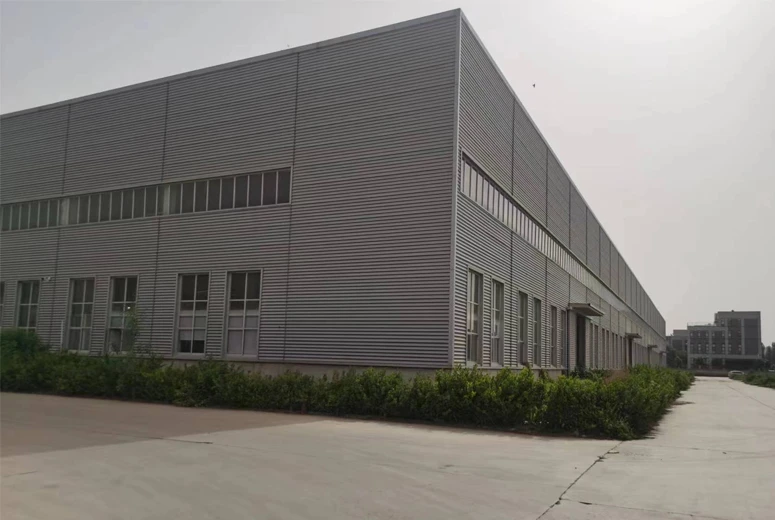C Channel Production Equipment for Efficient Manufacturing Solutions
The C Channel Making Machine Revolutionizing Metal Fabrication
In the world of metal fabrication, efficiency and accuracy are paramount. Among the myriad of machinery employed in this sector, the C channel making machine stands out as a vital tool that simplifies the process of creating C-shaped steel channels. These channels are widely used in construction and manufacturing, serving as structural supports, braces, and framing elements. This article delves into the intricacies of C channel making machines, their operation, advantages, and their impact on the industry.
Understanding the C Channel
Before discussing the C channel making machine, it is important to understand what a C channel is. C channels are elongated, metal pieces that have a shape resembling the letter C. They are characterized by their vertical flanges and flat parts, making them ideal for various applications such as building frames, bridges, and in HVAC systems. The versatility of these channels makes them indispensable in modern engineering.
The C Channel Making Machine
A C channel making machine is specifically designed to produce C channels from raw metal sheets. This machinery combines several processes, including cutting, bending, and rolling, to shape the metal into the desired format. The typical operation begins with placing the metal coil or sheet into the machine, which then cuts it to the required length. Subsequently, it bends the edges of the metal to form the C shape. Advanced machines may also perform additional processes such as welding or punching, depending on the specifications needed for the channel.
Operation
The operation of a C channel making machine typically involves a series of automated steps. Most modern machines are equipped with computerized controls that allow operators to input specific measurements and requirements easily. This automation ensures a high level of precision and reduces the likelihood of human error. Moreover, machines often come with adjustable settings, enabling users to produce channels of various sizes and thicknesses, catering to diverse project needs.
c channel making machine

Advantages of C Channel Making Machines
1. Efficiency One of the most significant advantages of using a C channel making machine is the efficiency it brings to the manufacturing process. Traditionally, creating C channels would involve multiple steps done manually, which is time-consuming and labor-intensive. With a C channel making machine, the processes are integrated and automated, significantly reducing production time.
2. Consistency Automated machines ensure that each channel produced is uniform in size and shape, maintaining high quality across batches. This consistency is crucial in construction and manufacturing, where precision is key to structural integrity.
3. Cost-Effectiveness Although the initial investment in a C channel making machine can be substantial, the long-term savings in labor costs, material waste, and time make it a smart financial decision for businesses engaged in steel fabrication.
4. Versatility These machines are adaptable to various channel sizes and designs, allowing manufacturers to meet diverse customer demands without requiring multiple machines.
5. Safety Modern C channel making machines are designed with safety features to protect operators, reducing the chance of accidents and injuries, which can be a concern in manual metalworking processes.
Conclusion
The advent of the C channel making machine has transformed the landscape of metal fabrication, providing a solution that is efficient, consistent, and cost-effective. As industries continue to evolve and demand higher quality products faster, these machines are poised to play an even more significant role in manufacturing. By investing in advanced C channel making technology, companies can enhance their productivity and maintain a competitive edge in the ever-evolving market. Whether for building construction, manufacturing, or other metalworking applications, C channels remain a crucial component, and the machines that create them are integral to meeting industry demands.
-
High Frequency Straight Seam Welded Pipe Production Line-BzZhou Xinghua Machinery Equipment Manufacturing Co., LTD.|Precision Welding, High EfficiencyNewsJul.30,2025
-
High Frequency Straight Seam Welded Pipe Production Line|BzZhou Xinghua|Precision Welding&EfficiencyNewsJul.30,2025
-
High Frequency Straight Seam Welded Pipe Production Line - BzZhou Xinghua|Precision Engineering&EfficiencyNewsJul.30,2025
-
High-Frequency Straight Seam Welded Pipe Production Line-BzZhou Xinghua Machinery Equipment Manufacturing Co., LTD.NewsJul.30,2025
-
High-Frequency Straight Seam Welded Pipe Production Line-BzZhou Xinghua Machinery Equipment Manufacturing Co., LTD.|Precision Manufacturing, High EfficiencyNewsJul.30,2025
-
High Frequency Straight Seam Welded Pipe Production Line-BzZhou Xinghua Machinery Equipment Manufacturing Co., LTD.|Precision Steel Pipe Manufacturing&Industrial EfficiencyNewsJul.29,2025


